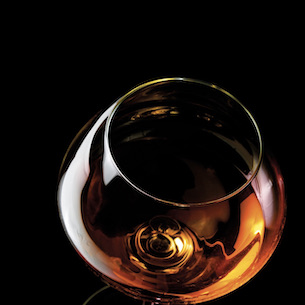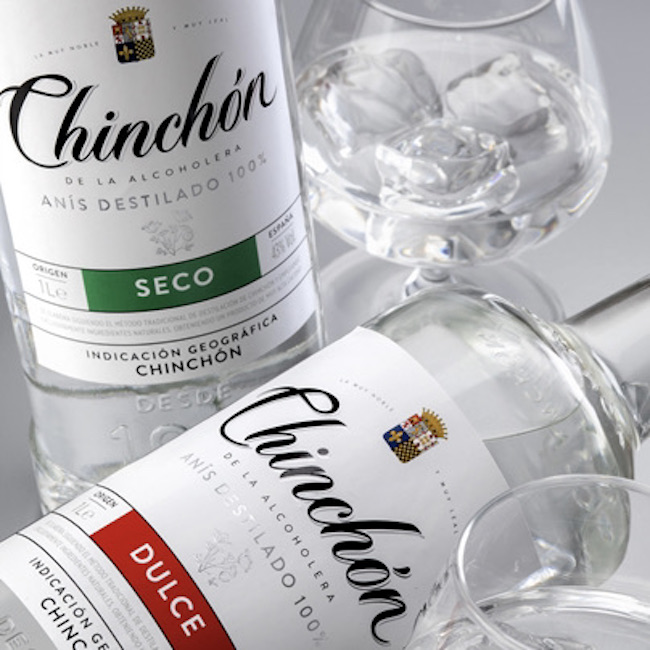.png.transform/rendition-xs/image_image%20(1).png)
Spirits
We find different Spanish spirits in the categories of brandy, aguardiente, whiskey, gin, rum, anisette, and liqueurs, as well as the 19 EU Protected Geographical Indications
Spirits constitute a cultural and economic heritage that is closely linked to the Spanish character and way of life. In Spain, they are produced following traditional production methods and taking advantage of our diverse topographical and climatological conditions which are excellent for growing the agricultural raw materials. In fact, a significant part of Spanish agriculture goes toward the production of spirits.
What are spirits?
A spirit is an alcoholic beverage produced by the distillation of products of agricultural origin and which contains at least 15% alcohol by volume. By agricultural origin, we mean an alcoholic beverage produced by the distillation, after fermentation, of one or more agricultural products such as grapes, grains, beetroot, potatoes, sugar cane, etc.
The process employed to produce spirits begins with fermentation, which is the natural transformation of the sugar contained in fruits and grains into ethanol. Next comes distillation, the process by which the alcohol is separated from the other components of the fermented liquid, to produce agricultural ethyl alcohol.
This is the raw material common to all spirits. Distillation can be done using either pot stills, alquitar stills, or column stills.
Spirits may undergo aging which, in addition to enhancing their flavor and organoleptic characteristics, adds flavor from the wooden casks — usually oak — in which they are aged. Aging can be static, where the beverage remains in the same cask throughout the entire process, or dynamic, where it is transferred from one cask to another at the producer’s discretion. It is also common to mix products from different origins or years, as occurs in the criaderas and soleras system characteristic of Brandy de Jerez, in which a percentage of the contents of each cask is periodically extracted to fill other casks. Both the production processes and the raw materials for these products are regulated by the European Union in Regulation 787/2019 of the European Parliament and of the Council on the definition, description, presentation, labeling, and the protection of geographical indications of spirit drinks. This regulation responds to the importance of spirits in the European Union and the need to mobilize an essential tool for the classification, protection, and development of these products.
Types of spirits
There are specific categories of spirits, including the ever-popular brandy, anisette, whiskey, rum, vodka, and gin, all of which will be given their own space in this manual. Each category has certain requirements that the spirits must meet to be included, such as raw material, minimum alcohol content, organoleptic qualities, number of distillations, or aging time.

History of spirits
It is difficult for historical research to establish the origin of distillation. There are sources that date this practice back to Ancient Egypt, but if we are to stick to written references, the first account of alcohol distillation appeared in China in the 4th century. According to historians, there is evidence of the invention of primitive stills by two women considered wise women of antiquity: Hypatia of Alexandria and Mary the Jewess. Both are credited with inventing the first distillation methods.
However, the Arabs are the original masters of this art. In this case, the first recorded reference to the use of the alembic is disputed by the physicians Abul Kadim and Fahzes, who practiced their profession in the 10th century.
Spanish culture has the honor of having the first texts to record distillation, dating back to the 13th century and attributed to the philosopher Ramon Llull. Another Spaniard from the same century is Arnau de Vilanova, a physician who distilled for the first time with human consumption of the product in mind. He did so by subjecting leftover wine to this process.
The production of spirits dates back to the 13th century in Italy. Tradition attributes to the alchemists the search for immortality, the "water of life," in the distillation of fermented grapes. However, its practical use seems to have been the transport of distilled wine for subsequent reconstitution before sale.
In Europe in general and in Spain in particular, certain religious orders have famously distilled their own brandy since the Middle Ages up to today. The popularity of this type of beverage grew so much that it was longed for by those who left for the Americas in the 16th century. There, the distillation process using new raw materials led to the creation of a new range of spirits.
For centuries, spirits were used as restoratives, medicines for all kinds of ailments, or as signs of hospitality, meaning people were eager to improve their taste. Little by little, different elements were added to the formulas, such as berries, fruits, seeds, herbs and leaves, coffee, sugar, flowers, aromatic woods, and more.
Spirits have gradually found a privileged place at after-dinner meals or as aperitifs, becoming the crowning glory of banquets and celebrations and accumulating cultural cachet in reference to their geographical and anthropological origins, their uses, their famous producers and specialists, and the businesses and wealth created around them.

Protected Geographical Indications (PGI)
In the spirit categories described above, we mentioned the geographical indications that give distillates their own identity by associating them with a region, a production method, and/or raw materials. There are more than 320 geographical indications in the European Community, and they include a number of Spanish examples.
Brandy de Jerez: made from airén and palomino grapes, it is located in the wine-growing area known as marco de Jerez and uses barrels or botas previously filled with sherry.
Brandy del Penedés: distinguished by using mainly wines with high acidity made from the Xarel-lo, Macabeo and Parellada varieties.
Licor café de Galicia: a spirit made from pomace produced in this region, it is produced by macerating naturally roasted coffee in alcohol or by distilling the pomace in the presence of coffee.
Chinchón: an anise-flavored spirit, sweetened or not, made from a distillate of green anise macerates in a hydroalcoholic mixture of natural alcohols of agricultural origin, in copper stills, with the exclusive use of the anise kernel or matalahúga.
Licor café de Galicia: similar to coffee liqueur, this distillate is macerated and distilled together with a characteristic blend of herbs that provide a particular aroma. Its growing popularity has led it to go beyond its role as a digestive beverage, and it is now also consumed at other times.
Orujo de Galicia: the main characteristic of this drink is the fermentation and distillation of pomace and lees obtained from the grape harvest in Galicia.
Patxaran from Navarre: this Spanish spirit comes from the maceration of sloe fruit (Prunus spinosa) in anisette. The sloe must come from the region of Navarre, and no additives, flavoring, or coloring can be added during preparation.
Palo de Mallorca: this geographical denomination is obtained by macerating gentian and cinchona in a hydroalcoholic solution. It has the sweetness and bitterness typical of the plants used.
Catalan Ratafia: the maceration in brandy of a wide and select variety of herbs, fruits and spices is the origin of this liqueur of great tradition in Catalonia.
Canarian Ronmiel: Ronmiel is made from rum or aguardiente, water, sugars, vegetable extracts to enrich its flavor and a minimum of 2% bee honey. This geographical indication recognizes spirits produced in the Canary Islands.

